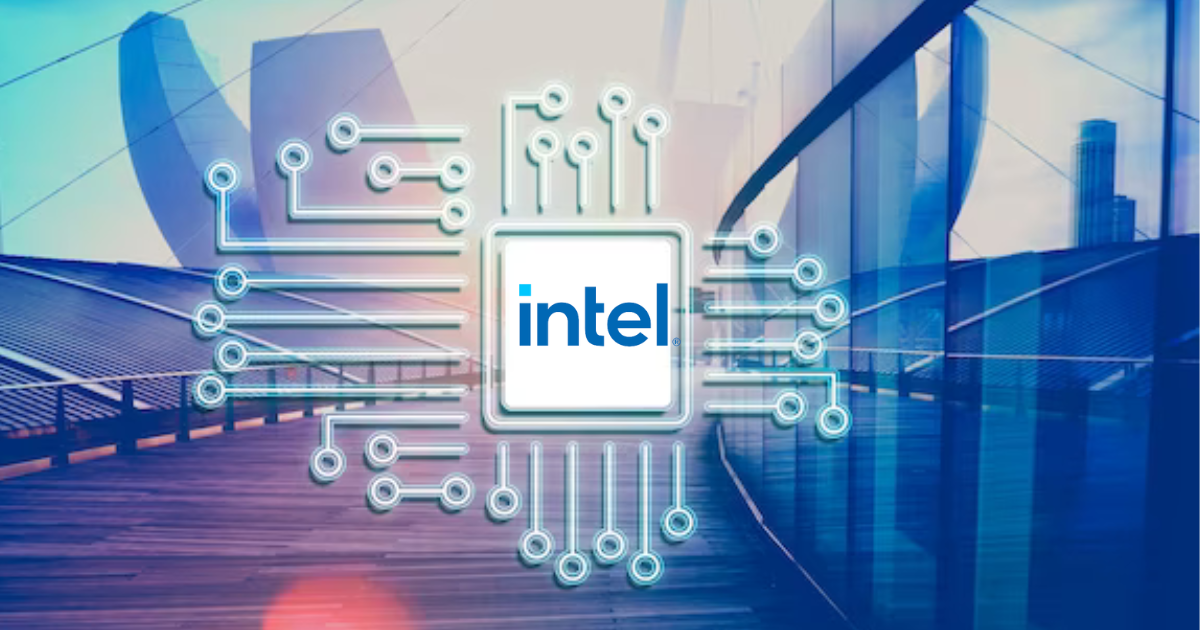Intel Stock Analysis
Intel Discloses $7 Billion Operating Loss for Chip-Making Unit
Intel, one of the world’s leading chipmakers, revealed significant operating losses for its foundry business, painting a challenging picture for the company’s efforts to reclaim its once-dominant position in the semiconductor industry. The disclosed operating loss, amounting to a staggering $7 billion, underscores the hurdles Intel faces as it endeavors to regain the technological edge it has ceded in recent years to rivals like Taiwan Semiconductor Manufacturing Company (TSMC).
The foundry business, which focuses on manufacturing chips for other companies, has been a focal point of Intel’s strategy to diversify its revenue streams and revitalize its competitiveness in the semiconductor market. However, the latest revelation of deepening operating losses signals ongoing challenges and setbacks in this endeavor.
Intel’s struggles in its foundry business are emblematic of broader shifts and challenges within the semiconductor industry. With the rise of advanced manufacturing technologies and increasing demand for specialized chip designs, companies like TSMC have emerged as leaders in semiconductor fabrication, surpassing Intel in key metrics such as process node technology and manufacturing efficiency.
The $7 billion operating loss for Intel’s foundry business reflects the company’s difficulties in scaling its manufacturing operations and competing effectively against industry incumbents. While Intel has made investments in next-generation chip technologies and fabrication facilities, it has faced delays and setbacks in bringing these initiatives to fruition, further exacerbating its competitive disadvantage.
The disclosure of the operating loss comes at a pivotal moment for Intel, which is under pressure to demonstrate progress and regain investor confidence amid mounting challenges and scrutiny. In addition to the operational hurdles in its foundry business, Intel has also faced leadership changes and strategic realignments as it seeks to chart a path forward in an increasingly competitive and dynamic industry landscape.
Despite the formidable challenges ahead, Intel remains committed to its long-term vision and strategic objectives. The company has outlined plans to invest in research and development, expand its manufacturing capabilities, and forge strategic partnerships to bolster its competitive position and drive innovation in the semiconductor market.
However, the road ahead for Intel is fraught with uncertainties and obstacles, requiring decisive action and strategic agility to navigate effectively. As the company grapples with the implications of the disclosed operating loss and strives to regain its technological leadership, stakeholders will closely monitor its progress and execution in the months and years to come.
Fundamentals Analysis
Bullish Fundamentals:
- Low Volatility: The stock has demonstrated stable and consistent annual returns compared to its sector peers, placing it in the top quartile. While stability is favorable, it’s essential to recognize that it may limit returns over time.
- Underpriced Compared to Book Value: Trading at a low price compared to its peers based on price-to-book value, the stock is positioned in the top quartile. This may indicate that it is undervalued, although it’s crucial to examine its financial performance thoroughly.
- Positive Cash Flow: The company has reported positive total cash flow over the most recent four quarters, indicating healthy operational cash generation.
- Positive Free Cash Flow: Similarly, the company has demonstrated positive total free cash flow in the most recent four quarters, indicating its ability to generate excess cash after accounting for capital expenditures.
- High Market Capitalization: As one of the largest entities in its sector, the company enjoys high market capitalization, placing it in the top quartile. Such companies tend to exhibit greater stability in the market.
- Superior Dividend Growth: The stock has exhibited top quartile dividend growth over the past five years compared to its sector peers, making it an attractive option for income-seeking investors.
Bearish Fundamentals:
- Poor Capital Utilization: The company’s management has delivered below median return on invested capital in the most recent four quarters compared to its peers, indicating suboptimal capital allocation.
- Poor Return on Assets: Similarly, the company’s return on assets has been below median in the most recent four quarters compared to its peers, suggesting inefficiencies in asset utilization.
- Overpriced Compared to Earnings: Trading at a high price compared to its peers based on price-to-earnings ratio, the stock exceeds the sector median, potentially indicating overvaluation.
- Below Median Dividend Returns: The company’s average income yield over the past five years has been low compared to its peers, although this may not be problematic for investors not seeking income.
- Poor Risk-Adjusted Returns: The company is delivering below median risk-adjusted returns compared to its peers, indicating unpredictability in returns despite potential outperformance.
- Low Revenue and Earnings Growth: The stock has shown below median revenue and earnings growth over the past five years compared to its sector peers, reflecting sluggish growth prospects.
- Highly Leveraged: Positioned in the bottom half compared to its sector peers on debt-to-equity ratio, the company is highly leveraged, potentially indicating aggressive growth strategies or financial risk.
- Overpriced on Free Cash Flow Basis: Trading at a high price compared to its peers based on price-to-free cash flow ratio, the stock is priced above the sector median, signaling caution for potential buyers.
In conclusion, Intel’s disclosure of a $7 billion operating loss for its chip-making unit underscores the formidable challenges and competitive pressures facing the company in the semiconductor industry. While the road ahead is fraught with uncertainties, Intel remains steadfast in its commitment to innovation and growth, seeking to overcome obstacles and emerge stronger in the ever-evolving landscape of technology and manufacturing.


































